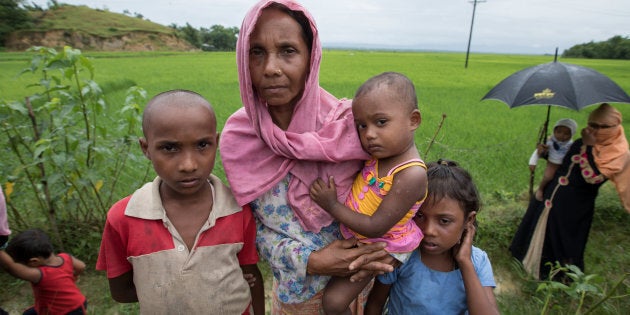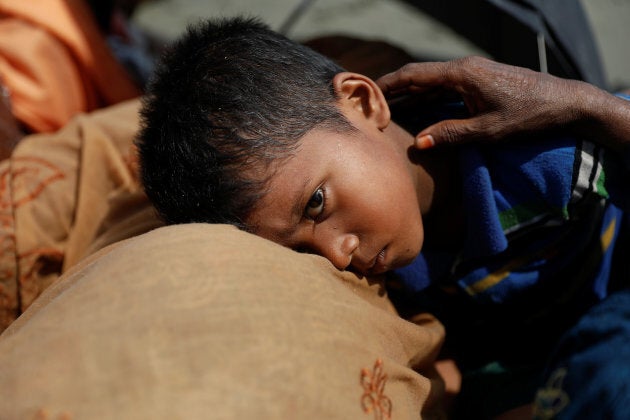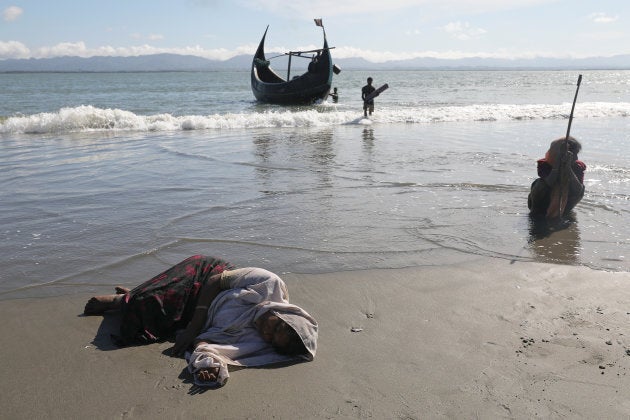
I can still remember the sight of fishing boats jam-packed with refugees landing onshore, one after another, and the scared faces.
This was in the early 1980s, when I was a fresh-faced aid worker helping Vietnamese refugees who arrived in Indonesia by sea. We were providing services inside the formal refugee camps, but would often end up at the beaches waiting to help the boats as they came in. There were always large numbers of children.
I wish I could say the world no longer saw this level of desperation. Instead, I hear daily reports from my colleagues on the ground in Bangladesh, responding to the mass displacement of Rohingya children and families from Myanmar, and the sheer level of suffering is almost unimaginable, even seeing what I have seen after three decades with Save the Children.
What could possibly spark an exodus of more than 500,000 people from their homes, from their country, in just a few weeks?
Attacks on entire villages, murder and rape. These are the atrocities that Rohingya children, who make up more than half of the new arrivals in Bangladesh, have told our staff in Cox's Bazar caused them to flee Myanmar's Rakhine state.

Ten-year-old Sharifa said she lost her parents in the conflict, which erupted on Aug. 25 and tore her world apart.
"The army shot and slaughtered people. They came to my village to kill people, and they shot my mother and father. I ran away from my house and hid in a bush — I waited for a day there. The next morning when I saw people coming past, I joined the crowd and started walking with them," she said.
It has been more than 30 years since I responded to the Vietnamese refugee crisis, and I still remember the large numbers of children always present with each new set of arrivals. Tragically, it is no different today, with children once again at the forefront of the crisis.
Children like 15-year-old Kabir, who also shared details of her horrific ordeal.
"We ran out of our house hearing the army might be nearby," she said. "A few minutes later, I looked back to see my house burning. I couldn't save my mother. She was sick and couldn't move out of the house."
Kabir is now living in a makeshift camp after walking for 13 days with her brother: "We just have a few clothes now, and no house and no food."
A few minutes later, I looked back to see my house burning. I couldn't save my mother. She was sick and couldn't move out of the house.Kabir, 15, a Rohingya refugee
Sharifa and Kabir are part of a group of at least 1,500 children who have been separated from their families, either through violence or in the panic of escape.
My teams are supporting many of these children by setting up safe spaces in camps in Bangladesh's Cox's Bazar district, providing ongoing support while attempts are made to find living family members. We know from experience that these children are incredibly vulnerable, and are at increased risk of exploitation, abuse and trafficking.
Local communities have been extremely accommodating, often sharing precious food and water.
But the sheer speed and scale of the displacement has put more pressure on already-stretched host communities. Chaos reigns, people are desperate and heavy rain continues to fall frequently.
Our teams are coordinating closely with the government while working around the clock to help the new arrivals, who are often exhausted and hungry after travelling for many days. We've distributed tarpaulins and ropes, kitchen utensils and hygiene kits, and set up spaces for children to play and be safe.

But it's not enough. There is an urgent need for more shelter, food, clean drinking water, hygiene and sanitation support.
And we need to help traumatized children rebuild their lives by providing psychological support and, critically, education.
Governments across the globe — including Canada — have a role to play in protecting and supporting those who have fled Myanmar or been displaced from their homes.
We urge the Myanmar security forces and all parties to the conflict in northern Rakhine state to end the violence, ensure the protection of civilians, and allow unhindered humanitarian access.
We welcome the Bangladesh government's efforts so far to provide a haven for hundreds of thousands of Rohingya, as well as their work to scale up the humanitarian response.
The hell children like Sharifa and Kabir continue to endure is unfathomable to many of us, and it's easy to be overwhelmed by the scale of need.
Canada must join other countries in recognizing the scale of this crisis by significantly stepping up its funding for the humanitarian response. While Canada's recent $2.55 million contribution is welcome, much more is required given the rapidly growing needs. An increased contribution combined with continued use of diplomatic means can go a long way in helping ensure children are protected and provided for.
The hell children like Sharifa and Kabir continue to endure is unfathomable to many of us, and it's easy to be overwhelmed by the scale of need.
But we owe it to children like them to do everything in our power to stop the violence in Rakhine state and find a peaceful, long-term solution to the crisis. In the meantime we must rapidly step up humanitarian assistance and ensure everyone's basic needs are met.
We must do all we can to give a generation of Rohingya children the future they deserve.
Mike Novell is Save the Children's Asia Regional Director.
Also on HuffPost: